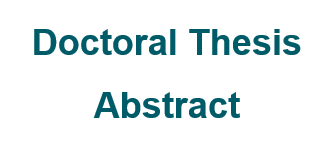Application of satellite images and LiDAR data for modeling and inventory of Eucalyptus spp in Uruguay
Doctoral thesis abstract
DOI:
https://doi.org/10.31285/AGRO.25.1521Keywords:
forest inventories, LiDAR, biomass, segmentation, forest harvestAbstract
The integration of information from field inventories, with data from remote sensors, and its high correlation with the structure of the vegetation, allows to adjust precise models for the estimation of forest production. This allows for a reduction in costs, time and bias, producing valuable inputs for processes such as segmentation and optimizing the harvest. Here we present an alternative to forest inventories and data processing through the use of LiDAR and multispectral images. The main objective was to evaluate the use of LiDAR information and high-resolution multispectral data in Eucalyptus plantations in Uruguay, to improve the quality and quantity of information provided to optimize forest management processes with respect to traditional inventory systems. The results obtained demonstrate the improvement in precision and quality of the data compared to traditional inventories. Tools that improve precision in four fundamental aspects for the quantification and management of forest production are provided: i) the use of compatible and additives models; ii) modeling of stand variables on a large scale using remote sensing data; iii) delimitation of homogeneous areas within the stand based on an unsupervised assessment; and iv) a method for optimizing felling plans based on timber availability, carbon prices, and harvest age. The main conclusion is that the application of geomatic tools in the forestry sector represent a fundamental change in inventory practices, from planning, execution and resolution, as well as the ability to generate predictive models and segmentation algorithms with greater precision than those obtained with field inventories. Throughout the thesis, it is shown that the use of data from different active and passive sensors increases the possibilities for automating forest inventories, increasing the spatial and temporal resolution of forest cartography. This, together with the use of parametric and non-parametric statistical techniques, constitutes an advance in the field of forest management in Uruguay.
Downloads

Published
How to Cite
Issue
Section
License
Copyright (c) 2021 Agrociencia Uruguay

This work is licensed under a Creative Commons Attribution 4.0 International License.
| Article metrics | |
|---|---|
| Abstract views | |
| Galley vies | |
| PDF Views | |
| HTML views | |
| Other views | |

















